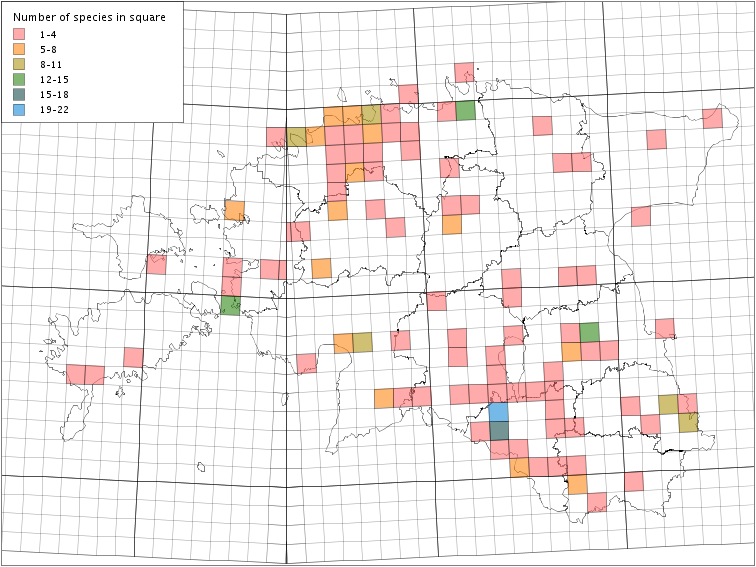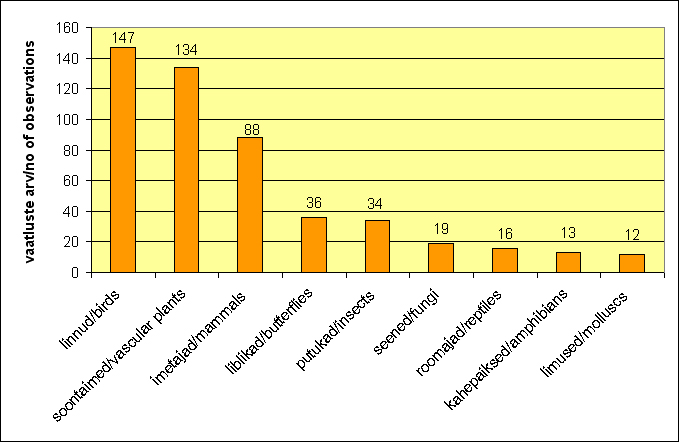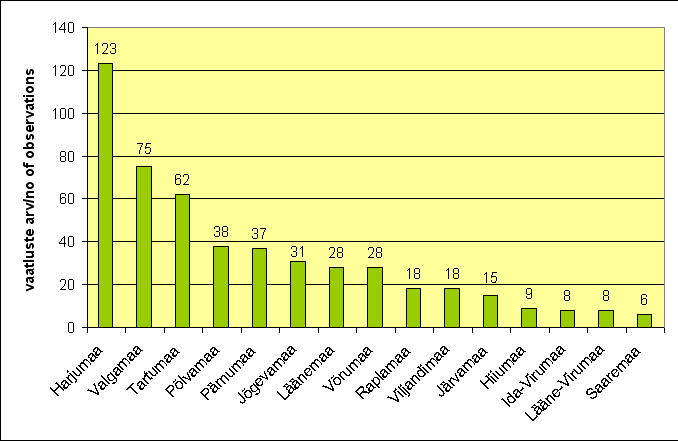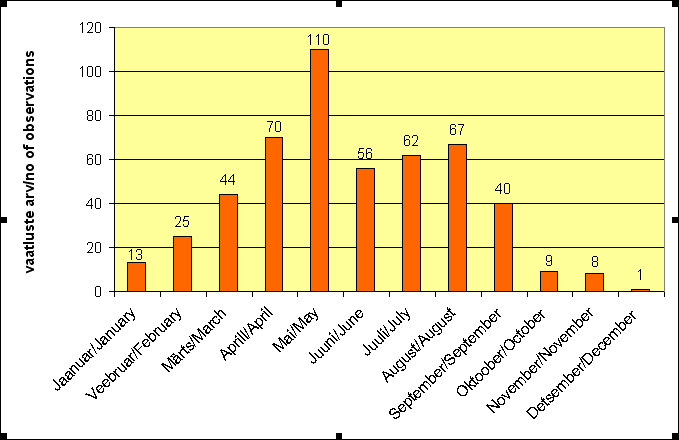Report of database usage in 2011
USING OF NATURE OBSERVATIONS DATABASE IN 2011
In 2011, users submitted 505 observations to the Nature
Observations Database. It is the worst result since beginning of active using in 2008. This map shows distribution of inserted observations
in 2011.

By groups of species inserted observations divided as
follow (here are only TOP 9 of species groups):
1) birds - 147 observations,
2) vascular plants - 134 observations,
3) mammals - 88 observations,
4) butterflies - 36 observations,
5) insects (not include butterflies) - 34 observations,
6) fungi - 19 observations;
7) reptiles - 16 observations,
8) amphibians - 12 observations,
9) molluscs - 12 observations.

The most popular species which observations were entered were:
Roe Deer (Capreolus capreolus) 19 times, Small Balsam (Impatiens parviflora) 15 times, White Stork (Ciconia ciconia) 10 times, Red Fox (Vulpes vulpes) and Moose (Alces alces) 9 times and Papilio machaon, Heracleum sosnowskyi and Starling (Sturnus vulgaris) 8 times.
Observations of species, which are under nature
conservation in Estonia numbered 115: 3 of
these were observations of species under protection category I , 20 under
protection category II and 92 under protection category III.
In 2011 76 observations of alien species were entered
107 persons entered their observations to the Nature
Observations Database in 2011. 42 of them inserted three or more
observations and 17 of them inserted more than 10 observations. It was less than in 2010.
By county: users entered more than 100 observations to
the Nature Observations Database only from one county - Harju (123). Followed Valga (75), Tartu (62), Põlva (38), Pärnu (37) and Jõgeva (31).

Observations submitted to the database were more frequent
in spring. The biggest number of inputs was in May (110) and April (70). Third place went to August (67)
(see the next graph).
